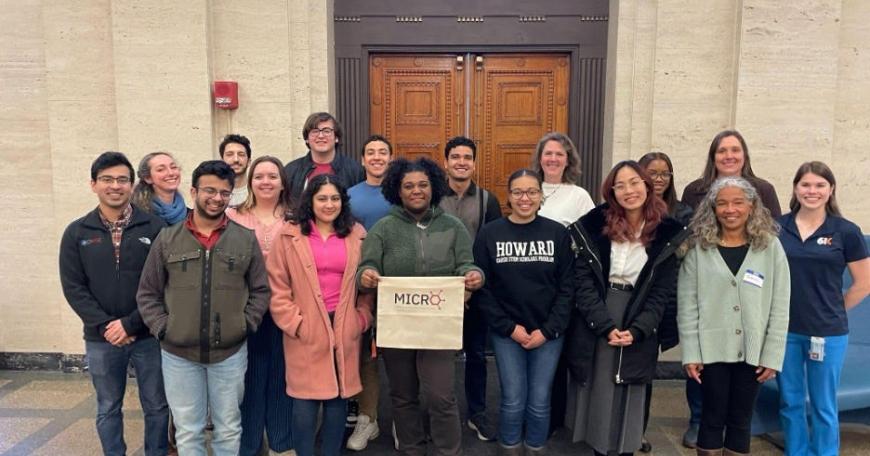
Increasing access to materials science and STEM education via unique research experiences
By Maria Segala
Through its Education Innovation Grants, the MIT Jameel World Education Lab (J-WEL) aspires to develop the building blocks, ideas, and connections that power global transformation in learning. J-WEL grants support educational innovations across a rich variety of fields including: linguistics, mechanical engineering, literature, architecture, physics, management, political science, and more. More than $5 million in funding has been awarded to MIT researchers since 2017.
As part of an ongoing series, we are taking a closer look at each 2023 grantee’s projects. In the spotlight today is Jessica J. Sandland, principal lecturer in the MIT department of Materials Science and Engineering and digital learning scientist with MIT Open Learning. Sandland’s project, “MICRO 2.0: Cultivating students’ STEM identities through a blended learning research and education program,” provides research opportunities to underrepresented undergraduate students. MICRO 2.0 blends online research, mentorship, workshops, and MIT campus visits to foster participants’ identities as STEM researchers and members of the materials science and engineering community. The program also seeks to address the underrepresentation of certain BIPOC groups in U.S. engineering doctoral programs.
What problem or challenge is your project trying to solve?
The overarching goal of our project is to increase access to high-level research experiences, mentoring, and ultimately, access to graduate education for undergraduate students who have historically had more limited access to these kinds of opportunities. We work within the field of Materials Science and Engineering but hope that our program can be a model for a wide variety of science and engineering departments.
More specifically, our focus right now is two-fold. First, we want to understand how the various research, mentoring, and education components of our program influence student identity development as researchers and materials scientists. And second, we want to understand the role that in-person programming could play in student research experiences that have taken place to-date entirely online.

What excites you most about your project?
The students, definitely. It’s really a joy to watch their research projects evolve through the years, and it’s exciting to see the successes that our program alumni are having in graduate school. Thanks to J-WEL’s support, we also recently had the opportunity to bring our program participants to MIT for a long weekend of presentations, panel discussions, tours, and social activities. It was exciting to have the chance to meet the students in-person and to engage with them in a variety of activities designed to support their graduate school-related goals.
What role does collaboration play in the development and implementation of your project?
Collaboration is essential. One of the most exciting things that has happened to our program in the last year is that MICRO has expanded beyond MIT for the first time. Dr. Cécile Chazot — program co-founder, MIT alum, and Northwestern University faculty member — has brought the program to the Northwestern Materials Science & Engineering department. This gives us a great opportunity to serve more students and extend the program’s reach beyond what we could in a single department at MIT.
What do you hope the biggest takeaway is for your project?
I would love it if our experience with MICRO inspires even more departments and universities to experiment with similar online research and mentoring programs. I also hope that learning more about our students’ experiences within the program will enable us to develop new programming directed at undergraduates from underserved groups. For example, our current MICRO program is aimed at undergraduates who aspire to go to graduate school, earn a Ph.D. and pursue a career in research. But there are lots of talented undergraduates with different career aspirations, and we hope what we learn through our project will enable us to expand our programming to meet their needs as well.
Originally published at https://www.jwel.mit.edu/. Interested in learning more about grants from the Jameel World Education Lab at MIT Open Learning? Visit the lab’s grants website.
Increasing access to materials science and STEM education via unique research experiences was originally published in MIT Open Learning on Medium, where people are continuing the conversation by highlighting and responding to this story.

